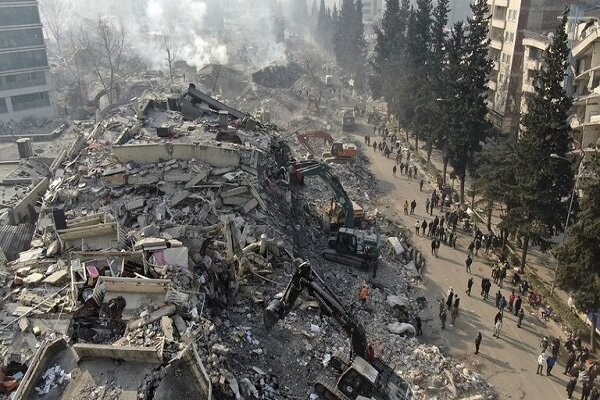IFRC thanks IRCS for services to quake survivors in Turkey, Syria

TEHRAN - The International Federation of Red Cross and Red Crescent Societies (IFRC) has appreciated the Iranian Red Crescent Society (IRCS) for its services during the recent devastating earthquake in Turkey and Syria.
“I praise the leadership and commitment of the Iranian Red Crescent Society,” IFRC President, Francesco Rocca, wrote in a letter to IRCS Head Pir-Hossein Kolivand.
“I assure you that the International Federation of Red Cross and Red Crescent Societies stands by your side in carrying out humanitarian missions,” Rocca added, IRNA reported.
“Words cannot express my gratitude to the volunteers and staff of the Red Crescent Society of the Islamic Republic of Iran, who worked tirelessly to save people's lives and support the needy from the very beginning of the emergency."
"Undoubtedly, your efforts are all the more meaningful when you consider the humanitarian response that the Iranian Red Crescent Society is making nationally in the Khoi region and in several provinces affected by climate problems," the IFRC president highlighted.
The Iranian Red Crescent Society was the first national community in the world, whose planes carrying humanitarian aid and its specialized rescue teams landed in the earthquake-stricken areas of Turkey and Syria and carried out rescue operations in cooperation with the red crescent societies of the two host countries.
Kolivand said on February 14 that the IRCS took action to deploy search and rescue teams, as well as the required tools and supplies, to the regions of Turkey and Syria affected by the February 6 earthquake.
Kolivand noted that by utilizing search and rescue canines as well as other tools, Iran’s relief personnel had been able to extract survivors from the wreckage as early as the first day.
On February 18, Syrian Health Minister Hassan Muhammad Al-Ghabash thanked Iran for providing aid to people affected by the recent devastating earthquake.
“In order to prevent a humanitarian disaster in the earthquake-affected areas of Syria, we reach out to the Iranian Red Crescent Society,” he said during a meeting with IRCS head Pir-Hossein Kolivand, IRNA reported.
The Syrian official appreciated relief and rescue services and humanitarian shipments sent by Iran, noting that Syria's health and medical staff have currently and to the extent possible, brought this crisis under control.
“In a short time, Iranian officials and relief teams arrived in the earthquake-affected areas of Aleppo and, based on instructions, started the relief operation and helping the earthquake victims.”
These teams also provided very good information to the Syrian relief teams, he added.
With the help of the Iranian ambassador in Syria and the proper interaction, the aid reached the earthquake victims very quickly, he stressed.
“We are very happy to have brothers by our side who sympathized with the earthquake victims and supported the suffering people of Syria,” Al-Ghabash highlighted.
In a meeting with Kolivand in March 2022, Rocca expressed satisfaction with the high number of volunteers of the IRCS worldwide and said that IRCS is one of the strongest communities in the world, which brings hope back to people’s lives after every incident.
Stating that IFRC will support the IRCS’s programs, he announced readiness to strengthen the Iranian Red Crescent Society's relations with other national communities because those communities can use Iran's experience and knowledge to deal with and prevent the incidents.
At present, the Iranian Red Crescent Society provides medical services to people in 13 Asian, African, and Latin American countries.
Currently, some 14 medical facilities are offering humanitarian, relief, and health services to the deprived people in 13 countries, including Azerbaijan, Afghanistan, the United Arab Emirates, Bolivia, Ivory Coast, Sierra Leone, Ghana, Congo, Kenya, Lebanon, Mali, Niger, and Ecuador.
The IRCS polyclinic center includes various departments such as laboratory, pharmacy, radiology and physiotherapy, and general practitioners along with obstetricians, gynecologists, internal medicine, pediatrics, ophthalmologists, and dentists.
MG
Leave a Comment